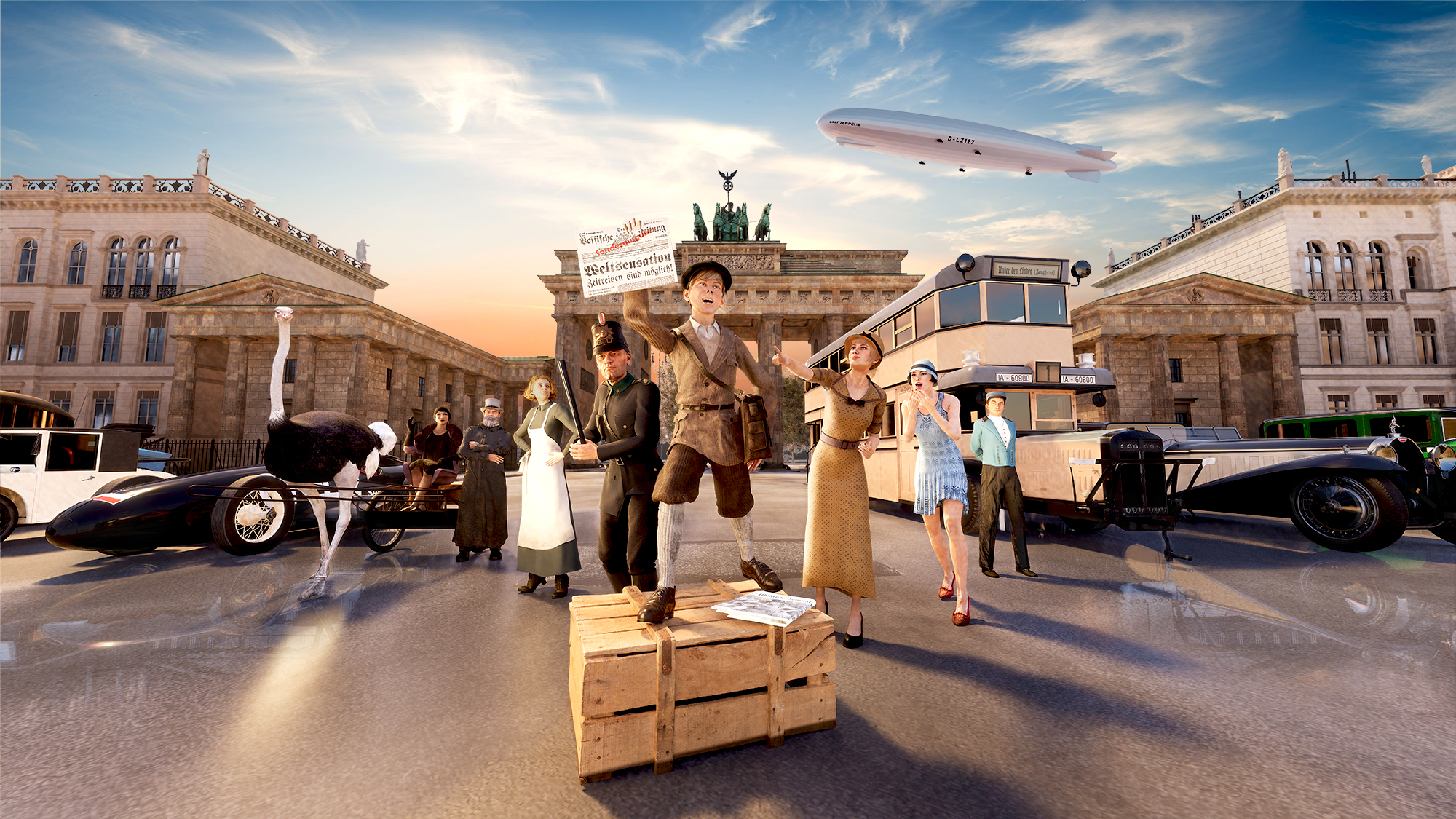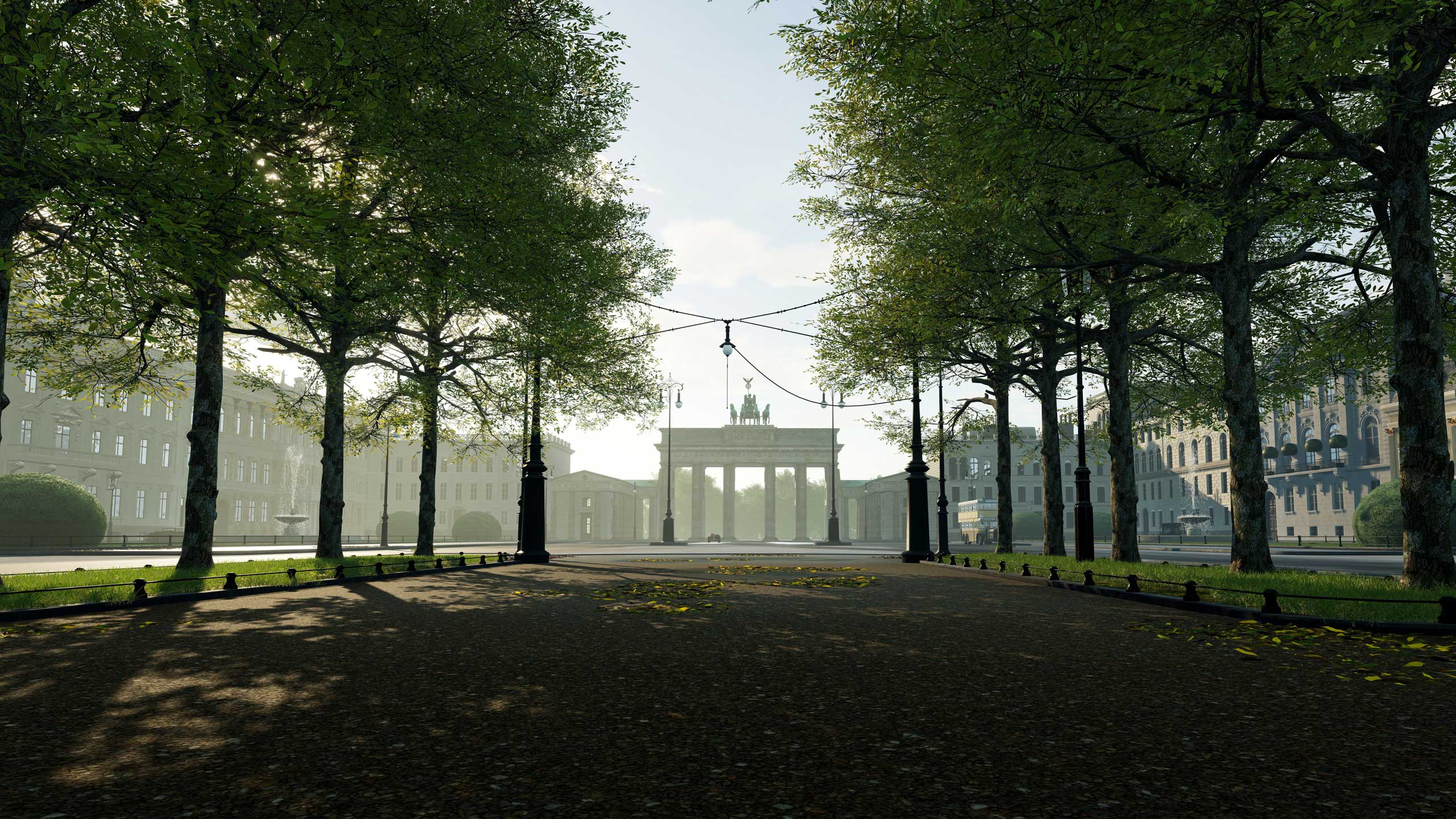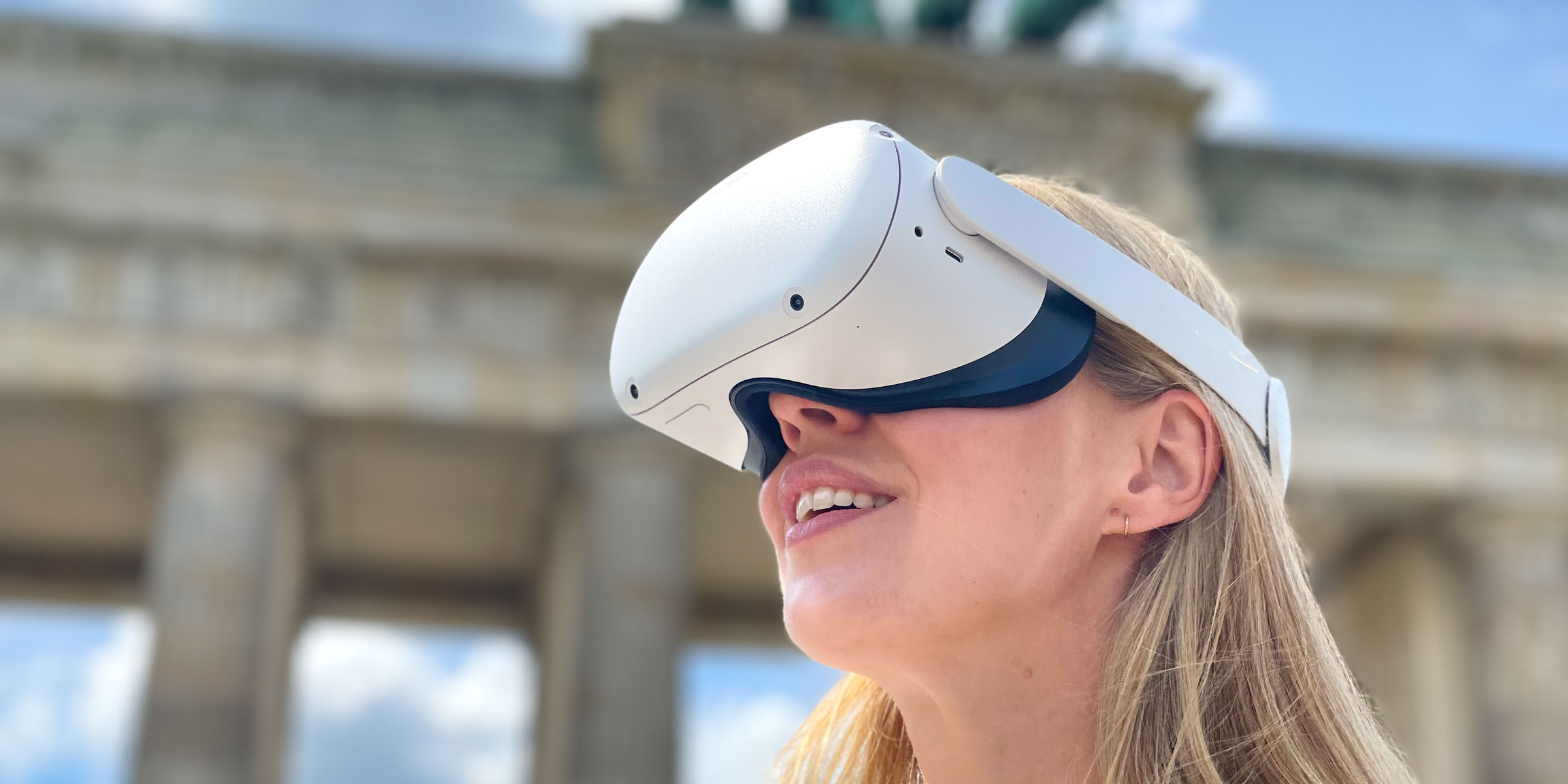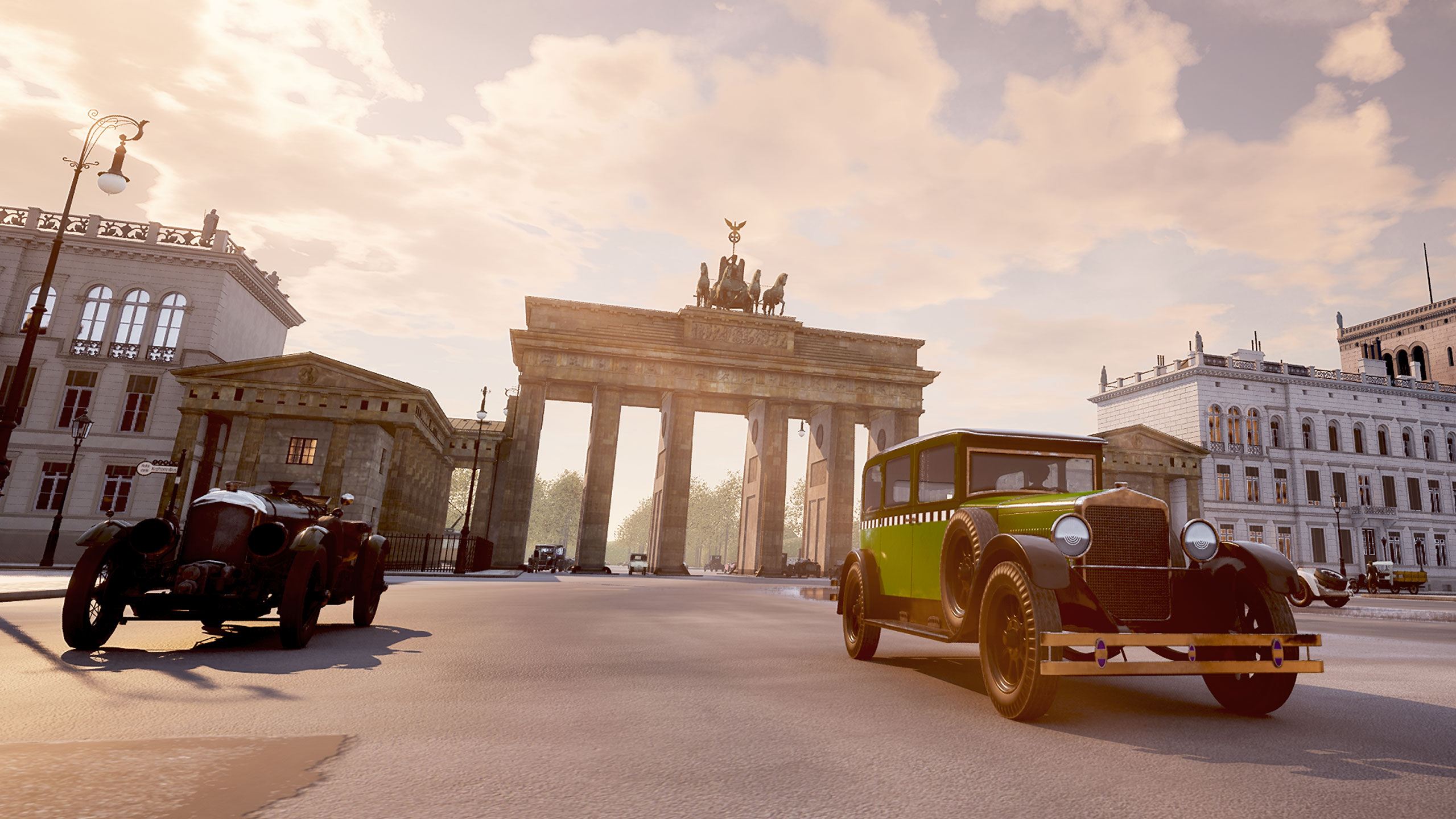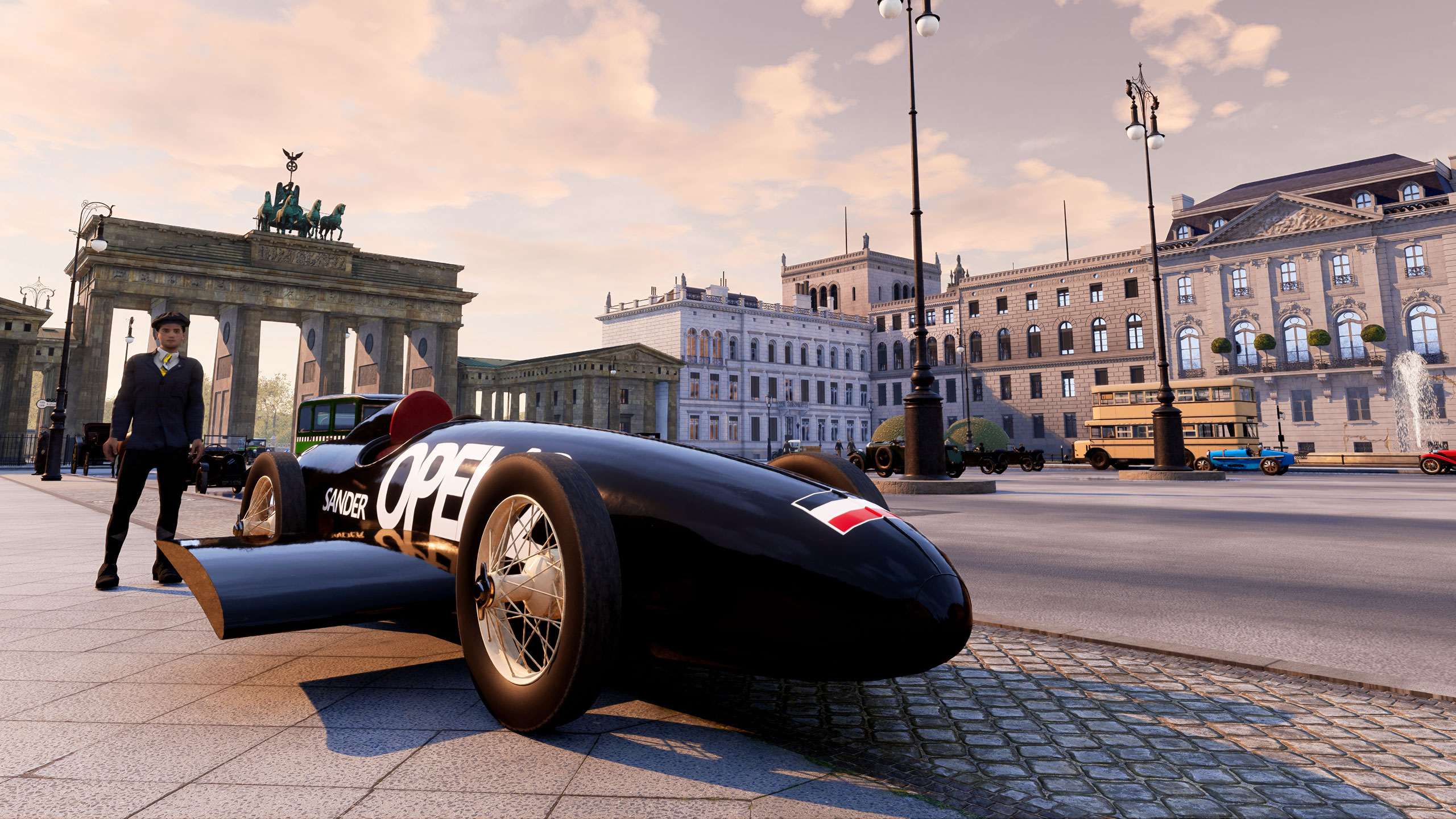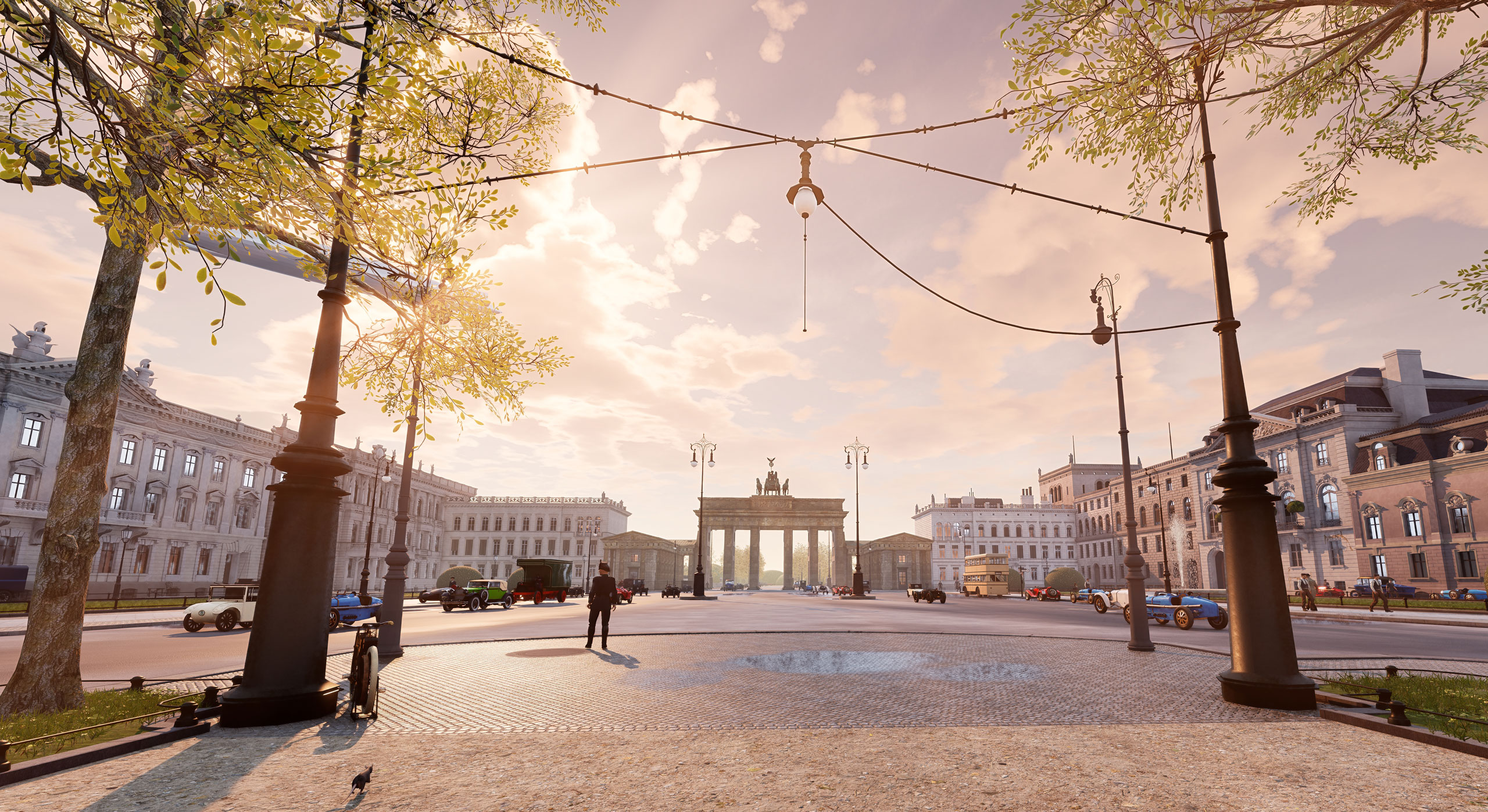Europe’s secret capital was a veritable powder keg – socially, politically and culturally. Energetic, fast-paced and tense to the breaking point, dazzling and seedy, breathtakingly exciting and “highly explosive” in every respect.
In the 1920s, Berlin was characterized by extreme contrasts: wealth and misery were often only a stone’s throw apart. Swank, pomp and splendid architecture on the grand boulevards. And one street over? Shabby backyards without sunlight. War invalids begging for alms in front of dazzling vaudeville and movie theaters. Furiously demonstrating communists and up-and-coming National Socialists. Unconditional modernism, high culture with international appeal, an avant-garde intoxicated with cocaine and a distinct milieu…
The time travel experience 20s.BERLIN not only depicts all this virtually, but also makes it possible to experience it again!
Of course, 20s.BERLIN is first and foremost an engaging, entertaining virtual reality experience. But the interactive city simulation also makes a scientifically sound contribution to Berlin’s urban history. How that?
Let’s start with the virtual architectures: None of the buildings visualized for 20s.BERLIN is a mere look-alike! Every single one corresponds to the historically documented original.
And not only that: Even details, for example “current” headlines, movie posters, and all scenes and incidents that go beyond mere everyday events, are closely oriented to the attested history.
Thanks to virtual reality, historical events, social trends and tendencies, as well as the attitude to life and everyday events of past eras, can be explored in a playful way. Technically state-of-the-art, intuitive, and both factually and historically well-founded.


